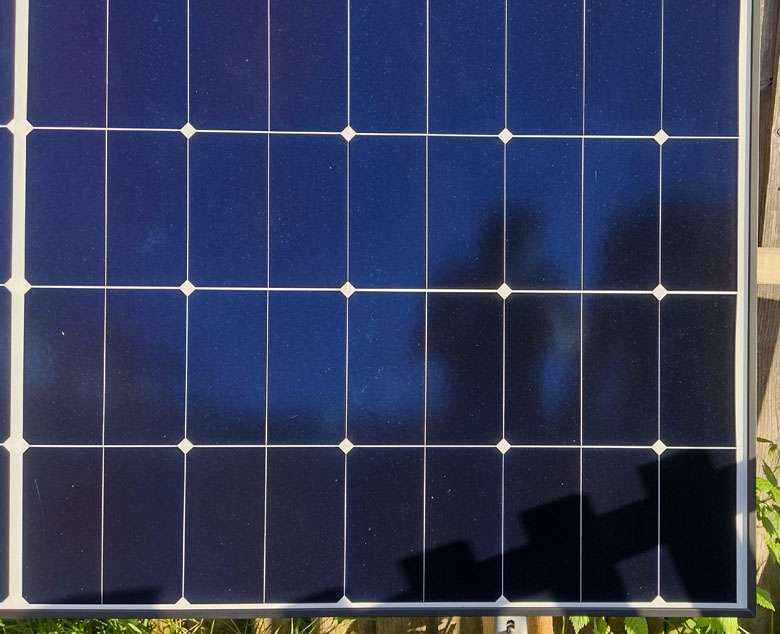I wanted to make a post about shading on the half cell split panels and this does not apply equally to all panels as the difference here would be the type of panel and its diode layout. See our post on Tigos which shows how the panels strings are layed out and reference to the diodes.
Solar panel shading is a “bit thing” when it comes to strings and the power of the string of panels (the array). Solar panels ( full cell 60) typically have the panels divided into three sections made up of two rows in series, there are three “sets” and they make around 12 volts and have a by pass at the junction.
When the power drops in the string, you see a panel voltage drop of 1/3. this then powers the system less the effected row within the panel. However the split half cell solar panels tend to have a different arrangement.

Here is the data in the early morning from our Micro Solar. the panels are slightly offset in there angle but we have shading on the panels, one near and one far. You can see the two DC currents,
PV1 – is the Lamp, PV2 – Is the fence.

Showing the lamp shadow, ( left side, continued on the fence behind) The reflection in the panel ( me and the fence behind) does effect the production slightly but they are not shadows.

Fence Shadow, The fence is near ( just out of shot) and as you can see there is a sharp edge shadow on the panel, this was up to the next row of cells when the data screen shot was taken.

It would appear that the “newer” design of the solar panels is NOT as effective at beating shading to part of the panel that older panels are. as we can see in the data point the voltage is higher, while the current is lower.

The power should run though the cells as shown here. the Diode in Blue and the “power” shown in the yellow.
The idea here is that the string in the panel is split into two sides, (adding current).
Here is a video showing how they work.
AS you can see the panels work slightly different, and in a string this maybe helpful, however the need for a tigo maybe more important here and actually work. the Tigo performance on the older design was not effective as the diode would cut in with part shading and the voltage would drop, with the tigo the same occurs and therefore the tigo was no benefit at all. This means I would have to revise the position that we have, but we would need to consider the facts which are misleading from tigos information and sales patter.
Personally, the high voltage as long as you are keeping current, could work in a string, but in this example they are not in a string but on a micro inverter with its own MPPT. I think this is something that we would have to test at a later date.

No responses yet